The endangered Bolivian river dolphin, Inia boliviensis, faces a number of natural and man-made threats to its very existence. This past August, Dr. Ellen Bronson, the Zoo’s Sr. Director of Animal Health, Conservation, and Research, made her second dolphin rescue trip to Bolivia – this time to relocate a pod of dolphins that swam into a shallow irrigation ditch and became trapped as the water receded.
Read her fascinating, first-person account of a rapid-response conservation effort to save these amazing creatures.
5 August:
I arrived very late last night with all of the medical supplies after a long 18-hour day of traveling from DC over the Caribbean, with a quick layover in Panama City, continuing on crossing the vast green of the Amazon for hours until I arrived in Santa Cruz. After a deep long sleep, the first in days after several days at the zoo of last minute and lengthy detailed preparation of supplies, ever changing plans, and scheduling, the trip to the Bolivian river dolphins began.
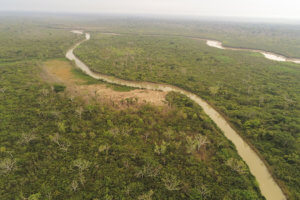
This trip and the rescue team were put together very quickly in the past 10 days since the trapped river dolphins were sited in a shallow irrigation ditch off of the Bolivian river Rio Grande. This time of year is the middle of the dry season, which will continue until the rains begin in early November, and therefore the water will recede more and more each day until that time. This dolphin group traveled up these irrigation canals of a large soy farm that were intentionally built to transport water from the river to the fields. The canals are deep enough during the rainy season (November-May) for the dolphins to travel up into, but when the waters recede, if they are too far from the main river, they become separated and cannot return. The leader of the dolphin rescue team for the Natural History Museum Noel Kempff Mercado in Santa Cruz, Claudia Venegas, a biologist who has many such rescues under her belt, came out to survey the situation just a week ago to assess how the capture would take place, plan the route through the farm back to the main river with the dolphins, and see how deep the water in the canal was.
Unfortunately for the dolphins, she found that the water level was very low, and that the dolphins would probably only have a few weeks at most to survive. She observed five dolphins in the canal, and noted that there are always more than are sighted.
The morning today was spent in Santa Cruz, the largest city in Bolivia and the capital of the department (province) that the Rio Grande flows through. We organized our gear, bought a few last minute snacks and essentials like batteries, and met up with the team. We left the city around 2pm, traveling north through smaller and smaller towns and more and more rugged roads, eventually leaving paved roads behind until we arrived 5 hours later at the property “La Moneda” (translated as “The Coin”). It had already been dark for several hours, and we arrived tired but excited for the next day. We set up camp at the farm, ate a quick meal of rice and beef that the farm cooks had prepared for us, and prepared to start the next morning at 5am.
6 August:
Before our alarms went off and as daybreak came, the birds started calling, green-fronted parrots screamed and oropendolas made their gular trills. We ate breakfast of beef broth with fried dough with strong coffee and mate tea and then set out in a caravan of trucks for the canal where the dolphins were trapped.
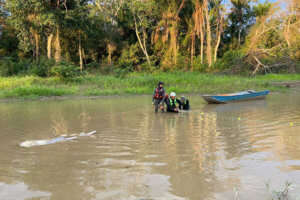
As we approached the canal, multiple dolphins were quite obvious as they breached the surface by just an inch or two with their grey dorsal fins. Normally this species is especially hard to observe, and many people living near the dolphins don’t even know they exist because they live in murky waters and are not nearly as visible at the surface as their marine counterparts. I hadn’t been to Bolivia in four years, when we did the last rescue and translocation of six dolphins trapped in a lake named Laguna Pistola, which had also separated from the river due to silting from fields changing the river flow over time. We had hoped to return to lend veterinary support to a further rescue the very next year, but with the extensive Amazonian forest fires of 2019 and 2020, a government coup in 2019, and then the COVID19 pandemic, our efforts had been continually thwarted. The site of those grey fins and cumbersome pink flanks breaking the surface made my heart jump! So great to be back on this project and working with this amazing team after much too long of a wait.
The site represents the entire dichotomy of the precarious situation that these dolphins find themselves in: on one side of the road the rescue team was moving the dolphins out of the shallow ditch and preparing them for transport. On the other side of the road directly across from our site, bulldozers were tearing down a strip of forest and other machinery was digging a deep second canal to provide further crop irrigation. Despite this destruction, a multitude of different wildlife was present around us today as we worked. Caiman were plentiful in the canal we were working in, a curious capybara swam right past us at one point, and blue and gold macaws flew squawking overhead. Wood storks, roseate spoonbills waded through the canals, and cara caras and toco toucans flew overhead, while howler monkeys could be heard in the dstance, and even a crested eagle (the slightly smaller cousin of the harpy eagle) watched from a tree nearby.
The rescue team consists of fifteen people: multiple water rescuers and forest firefighters (which have participated before and are experienced in restraining the dolphins) to net and restrain the dolphins and bring them to shore, a group of wildlife biologists to restrain and perform morphometric measurements on the dolphins and keep them wet and safe during the transport, and a veterinary team consisting of a young Bolivian veterinarian, a Bolivian veterinary student, and myself, to monitor the health of the dolphins during the restraint and collect samples to assess their overall health and exposure to disease, pesticides, and toxins.
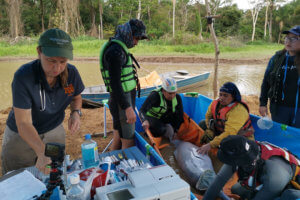
The team first built an area to receive the captured dolphins, with two small swimming pools with a foam mattress in the bottom of the pool covered in a foot or so of water. This area on the bank of the canal was covered by a large tarp to shade the dolphins while in the pools, held up with poles from branches cut and whittled into shape with machetes. Then the rescue team laid long nets across the canal in three places to restrict the movement of the dolphins. The canal at its deepest was shoulder high in a very thin channel down the middle, and most of the canal was less than knee-deep. The water rescue team then used a third net to form a V around one dolphin and move it toward the shore, with the shore and the V creating a triangle. As the first dolphin came close to the shore, the rescuers surrounded it, gently restrained it, and a tarp was run under the dolphin so that it could be carried to the waiting biologists and my veterinary team in the small pools. Once in the pool, the dolphins quickly calm down, slowing their breathing as they become accustomed to breathing outside of water, as one person holds their long beak, and another straddles their back end just in front of their fluke. I then assess the general health of the animal with a full physical exam, and take samples of blood from the fluke, swabs of various body openings, and a fecal sample. While this is happening, the rescue team is pulling a second dolphin from the water and placing it into the second pool. Once everything has been collected on both dolphins, the team moves them to the truck, prepared with two soaked foam mattresses and a tarp around each one to hold the water in like a pool during the transport.
The first two dolphins were loaded onto the truck, and we drove about 30 minutes through the farm to a deep canal that leads directly into the river where the dolphins initially came from. One of the two was fitted with a GPS “Tag”, a thin long capsule that is attached to the dorsal fin and receives signals from satellites passing by and records GPS points when the dolphins breach the water surface. The devices send the current location of the dolphins in real time to my computer. We plan to deploy three of these total in the group in order to track the dolphins after the release and ensure that they are thriving and to monitor where they go. We released the two into the river, they quickly dove under water, and surfaced once far downstream, not looking back.
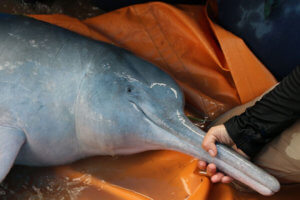
We repeated this process today with two more dolphins, both of which were younger adults and were completely grey. This species is born completely grey pigmented, and with age, the pigment dissipates, first from their bellies, then up their sides, then over their top, until they are fully pink in old age. All of the dolphins today were also quite thin, not surprisingly since the water in the channel had become so shallow that they likely had not been able to hunt fish well in the past weeks.
When we released the final two dolphins, it was already becoming dark (which occurs around 6:30pm in Bolivia year-round), so we decided we would have to stay another night and translocate the last dolphins the next morning. We returned to the camp area, ate a dinner of rice, corn, and chicken, and I began processing the samples from the first set of dolphins. First, electricity had to be found, which at this site was present since we were on a farm, but at other sites has had to be run off of generators in the forest. Once the initial analysis was completed, I had to use a centrifuge running off of a car cigarette plug to spin the samples and separate the cells from the serum or plasma. Then off to bed in the tent for 4 short hours until those darn macaws start calling again at dawn!
7 August:
After rice flour rolls and more mate tea, we set out again for the irrigation canal site. Today we captured a total of three remaining dolphins, but it wasn’t as simple as we had hoped: The hope had been to quickly catch the last two and leave for the city by midday. Well, first two turned into three dolphins that had be to moved, and these ended up being three feisty ladies that were not keen on moving from their shallow abode. These large adult females, one of which was pregnant, were all bright pink, almost completely. The last dolphin was of course the hardest to catch and evaded the nets repeatedly, but in the end, the water team was more determined to rescue her, and we transported all three at once in the truck to the river, placing another tag transmitter on one of the three. We took more samples, more body measurements, more physical exams, and then gladly slid them off the tarps and into the water, watching them surface that one last time from far down the river.
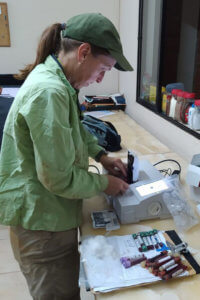
We made the return trip this evening on the bumpy dusty road, then the paved road, for 5 hours back to Santa Cruz with samples in tow. The initial analysis of today’s samples will have to wait until tomorrow morning until I am more awake. The samples will then be stored in the freezer until they can be carried to the US for more specialized laboratory testing for exposure to infectious diseases, chemicals, pesticides, and heavy metals. The Bolivian pink river dolphin is a “sentinel species” in these river systems, meaning that they are at the top of the food chain and provide us with valuable information to assess the overall health of the river and the other animals in it and the animals and humans that eat the fish from it, just as the dolphins do. We hope that the results provide information about the health of the dolphins and ecosystem but also about the threats that this species faces from the dwindling intact habitat, the erosion and silting of the rivers from the agricultural fields, and the possible exposure to various threats from the fields and river edges such as pesticides, diseases from humans and domestic animals, and heavy metals such as mercury that could accumulate in their systems over time. The hope is that this information can be used by our Bolivian counterparts to convince the government and other stakeholders to protect the dolphins, the rivers, and this ecosystem in order to prevent the need for such rescues in the future. With these lofty goals in mind, we fell into a deep sleep after a thorough shower to clean off two days of mud and removing wet clothes up to our chins.

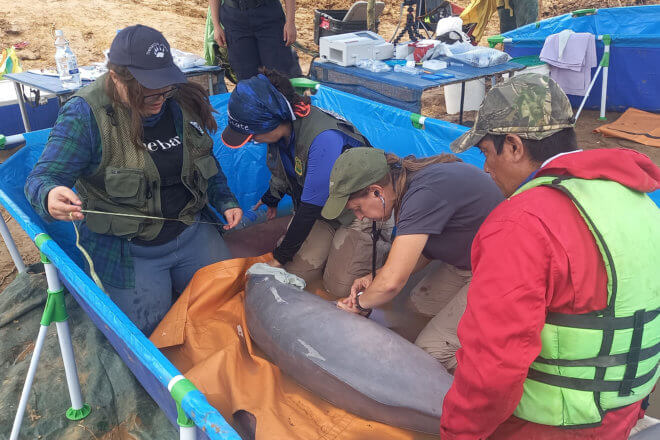
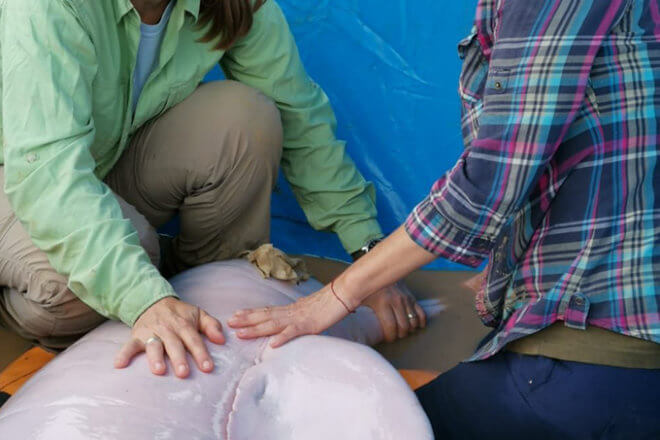
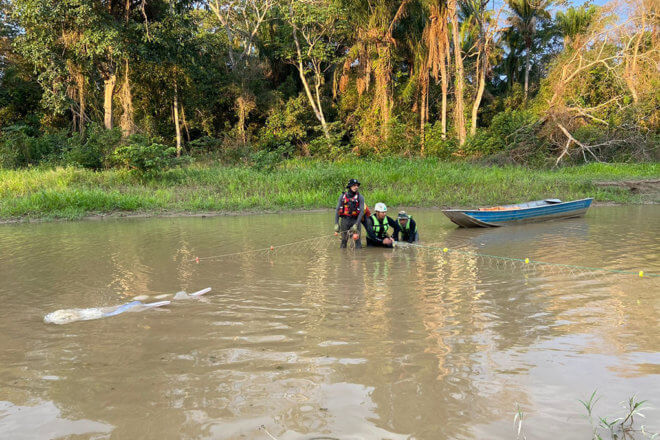
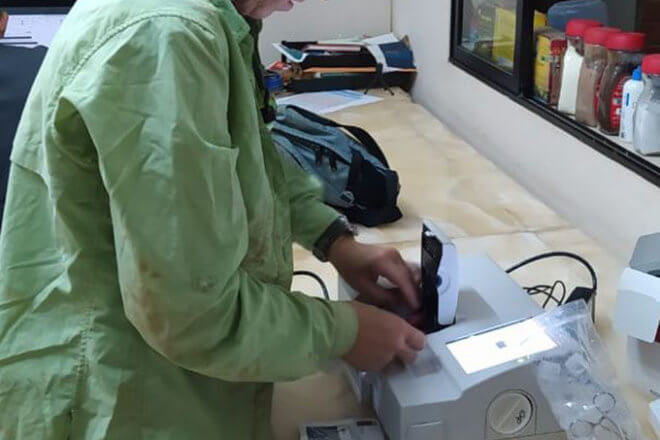
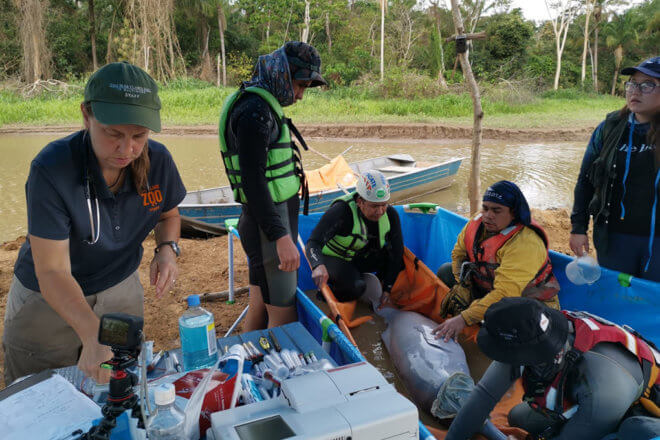
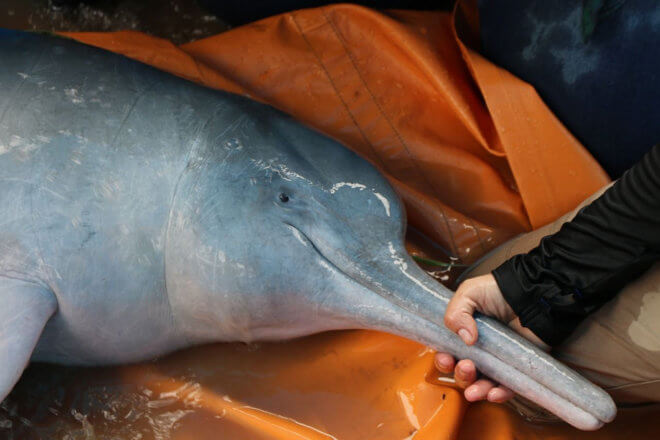
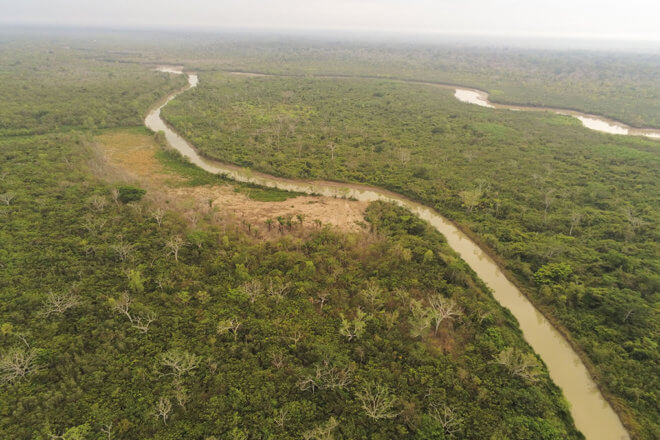
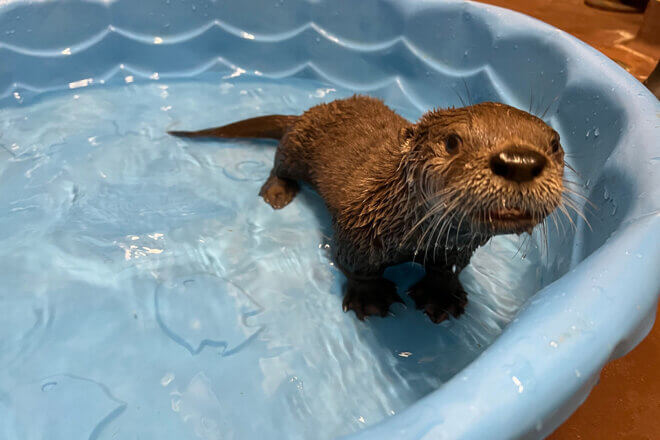
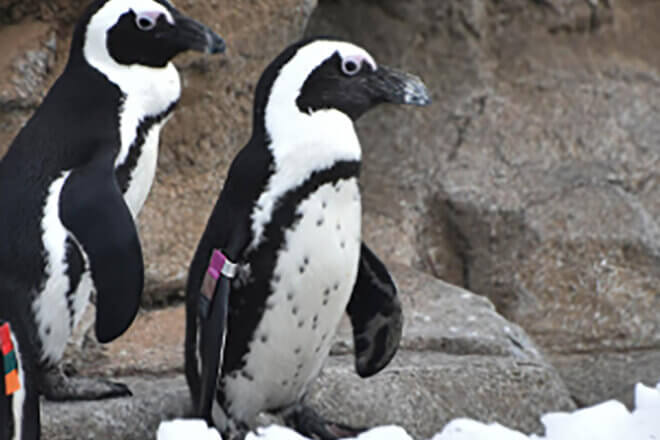
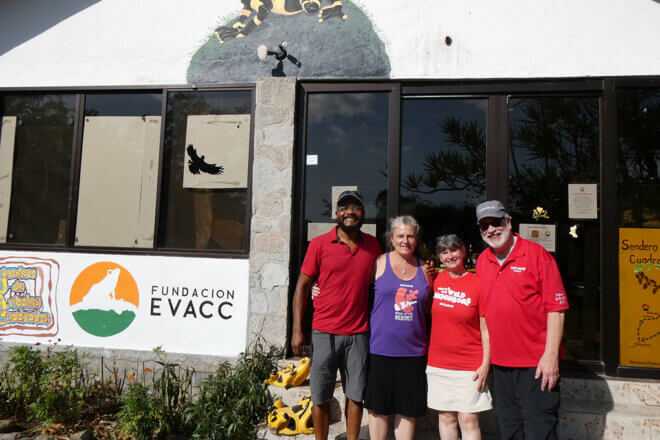

Share this article